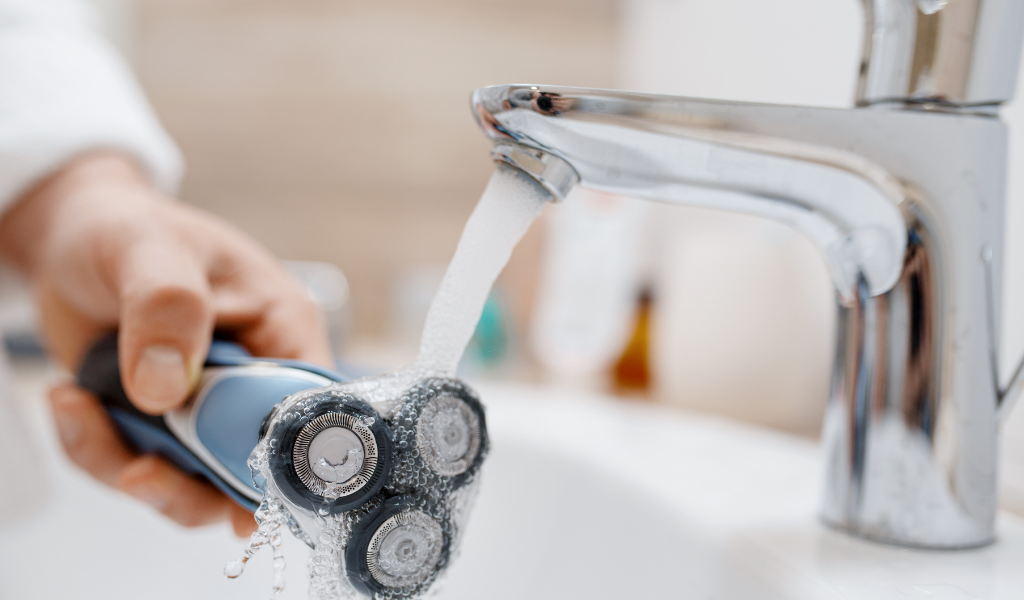
Day One after shaving, skin feels nice and smooth. So why does Day Three feel bumpy and painful? Is your razor causing the bumps? Well, that is a common question.
Shaving can cause unsightly and bothersome razor bumps. In short, the type of razor and how it is cared for certainly contributes to skin irritation. Hence, changing your razor can reduce razor bumps and improve the skin’s appearance.
To find out which razor you should be using and how to care for it, read on.
Razor bumps is a term that is used to describe the skin irritation that commonly appears 2-3 days after shaving. Men may see this condition on their faces, while women can experience razor bumps from to-avoid-bikini-line-bumps/">shaving the bikini area. Essentially anyone using a razor for hair removal is at risk for razor bumps.
There are many types of razors available today. Each type of razor is different in terms of cost, convenience, and use. Here are some pros and cons of the common types of razors for shaving.
| Type of Razor | Pros | Cons |
| Electric Razor | Faster shave Convenient for on-the-go use Wet or dry | Requires batteries or power More expensive Requires maintenance/cleaning |
| Straight Blade | Lower risk of skin irritation No pulling/tugging at the follicle Better precision | Most expensive The learning curve to use Takes more time to shave and requires products |
| Disposable cartridge, double or triple blade | Easy to use Easy to replace Less expensive Closer shave | Risk of nicks/cuts Replace after 4-5 uses Going over areas repetitively increases skin irritation |
The key to selecting a razor that won't cause bumps is to consider how the razor works.
Most electric razors snip hairs off between multiple rotating blades. Some may pull or tug the hair, which can irritate the follicle. Pulling hairs before cutting also means that blades will release the hairs below the skin's surface. While that can mean a close shave, it can also be a problem. Growing under the surface may lead to ingrown hairs.
Choosing a razor with the least number of blades will help reduce razor bumps too. Disposable razors with two or three blades usually work by catching the hair on the first blade and cutting it off with the second blade. A single-blade and straight razors allow a clean cut without tugging hair or leaving a jagged edge.

Properly caring for a razor can also help prevent razor bumps. Here are some keys to razor care that will help to prevent razor bumps:
No matter what type of razor you choose, keeping it clean and protecting the blades before, during, and after use can help reduce razor bumps.
Now you know how to choose a razor and how to care for it. These two steps can reduce the burden of razor bumps. If you’ve tried changing your razor but still battle razor bumps, it might be time to talk to a doctor. In some cases, razor bumps can be severe, or lead to more serious conditions.
To talk with one of the top board-certified physicians, book an appointment below. Our caring experts can help answer your skin questions.
Disclaimer: The contents of this article are for informational purposes only and do not constitute medical advice. The information, graphics, and images on this site are not intended to substitute diagnosis or treatment by a medical professional. Always seek the advice of a licensed physician for any questions you may have regarding a specific condition.
Tshudy, M. & Cho, S. (2021, January 30) Pseudofolliculitis barbae in the U.S. military, a review. Military Medicine, Volume 186, Issue 1-2. Retrieved from https://doi.org/10.1093/milmed/usaa243
Nussbaum D. & Friedman A. (2019, March) Pseudofolliculitis barbae: A review of current treatment options. Journal of Drugs in Dermatology : JDD, 18(3). Retrieved from https://europepmc.org/article/med/3090932
Eske, J. (2019, July 29). Causes and remedies for itchiness after shaving. Medical News Today. Retrieved from today.com/articles/325886#causes">https://www.medicalnewstoday.com/articles/325886#causes